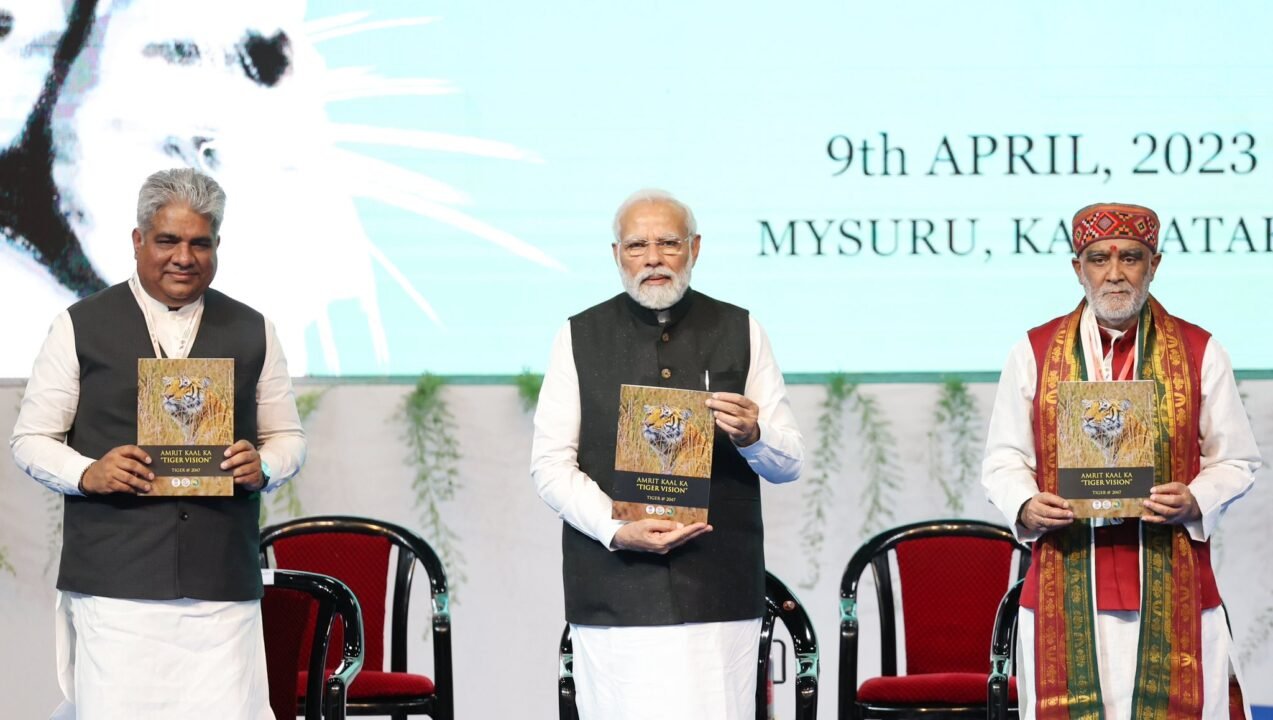NEW DELHI, Sept 11: Natural geographic isolation is occurring among Asiatic lion populations in Gujarat and there is currently no need to translocate them, according to the director general of the International Big Cat Alliance.
SP Yadav, who previously led both Project Lion and Project Tiger, told PTI editors at the agency’s headquarters that translocating Asiatic lions is unnecessary since the population is not confined to a single area.
He said it is true that if an epidemic occurs, like the one in Tanzania where 90 per cent of the lion population got wiped out, it could be devastating.
“However, epidemics spread when there is no geographical segregation of the population. And in Gujarat, the distribution area has expanded from 15,000 square kilometres to 30,000 square kilometres, so there is no need for human intervention,” Yadav said, addressing concerns about the risk of an epidemic or a natural calamity wiping out the entire Asiatic lion population in the state.
Yadav said that a male lion naturally dispersed to the Barda Wildlife Sanctuary from Gir, followed by a female, and cubs have since been born there.
“Had the population been confined to one area, this would have been a concern. But now, no such question arises. Nature is taking care of it. At present, I believe there is no need (for translocation),” he said.
Gujarat is the only habitat for Asiatic lions in India, and experts have long advocated for the relocation of some lions to other regions of the country to reduce their vulnerability to diseases due to close proximity.
In 2013, the Supreme Court directed the government to translocate Asiatic lions from Gujarat to Kuno National Park in neighbouring Madhya Pradesh within six months. However, nearly a decade later, cheetahs were introduced to Kuno from Africa as part of the world’s first intercontinental translocation of big cats.
In December 2022, former minister of state for environment Ashwini Kumar informed the Rajya Sabha that the Wildlife Institute of India had identified Barda Wildlife Sanctuary as a “potential site where a population of 40 adult and sub-adult lions could be accommodated within the larger landscape of Barda-Alech hills and coastal forests through natural dispersal”.
The Gujarat forest department also operates a breeding centre for herbivores within the Barda sanctuary to increase the prey base for the lions.
Asiatic lion population estimations are conducted every five years. According to the most recent estimate in June 2020, Gujarat is home to 674 Asiatic lions, up from 523 in 2015.
Data presented by the environment ministry in Parliament on February 5, 2024, revealed that 555 lions have died over the past five years. The lion population was just 284 in 1990, with a distribution area of 6,600 square kilometres.
A document published by the office of Gujarat’s chief wildlife warden in June 2020 showed that the distribution area of lions had increased from 22,000 square kilometres in 2015 to 30,000 square kilometres in 2020.
A 2022 scientific report published in the journal Nature revealed that approximately 48 per cent of the current population of 674 lions has dispersed outside protected areas, spanning nine districts and 13 forest administrative divisions.
The report, titled “Living on the Seacoast: Ranging and Habitat Distribution of Asiatic Lions”, describes lions living outside the Gir Protected Area (Gir PA) as residing in satellite populations across varying habitats, including undulating terrains, riverine areas, and coastal regions. Coastal habitats are identified as the most significant of these satellite habitats. (PTI)












